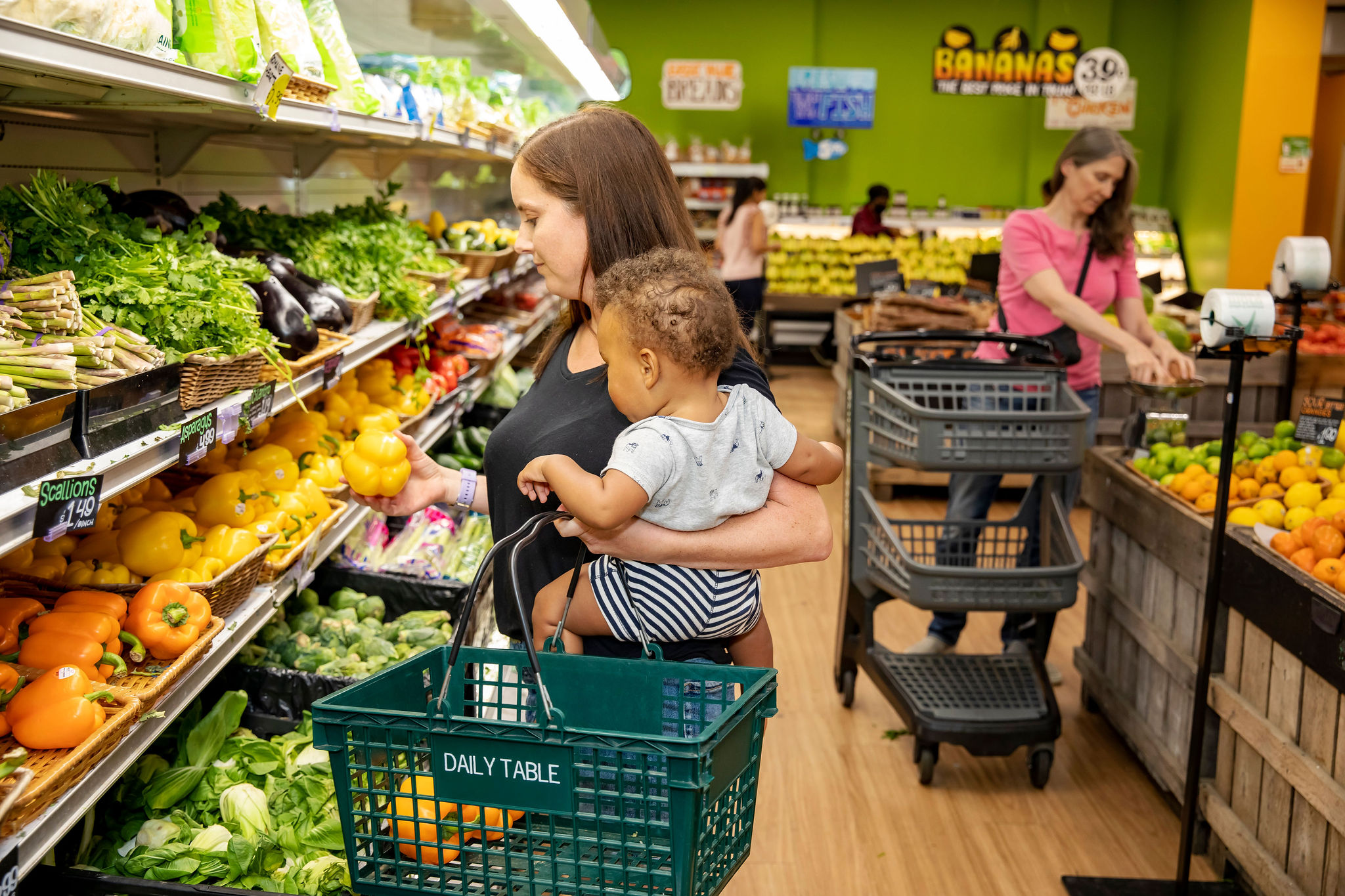It is possible to shop for healthy foods on a budget. Here are some ideas to help you get started:
Before You Go…Make a List & Stick to it
Make a shopping list for all the items you need. Keep a running list on your phone, on the refrigerator, or in a wallet. When you’re in the store, do your best to buy only the items on your list.
Watch for sales, coupons, and loyalty programs
- Check your local grocery store for sales and look in circular flyers.
- Use coupons to save even more money for you and your family, and be sure to buy what you know they will eat.
- Use store loyalty programs and/or shop at discount stores but take note some may charge an annual fee.
At the Store…Shop Wisely
- Buy store brands! They are almost always less expensive than brand names.
- Scan the top and the bottom of the shelves in the aisle. Stores often have higher-priced products at eye level.
- Meat, poultry, and fish can be the most expensive items at the grocery store. To decrease the cost, buy in bulk if available and once you get home separate, place in freezer bags (make sure you get all the air out), and place in the freezer.
MEAL PLANNING
Go through your cupboards, refrigerator, and freezer. What do you have already that needs to be used?
Make a stir fry with the leftover rice by adding some vegetables. Put those roasted vegetables to work and make a veggie pot pie. There are so many options! You could also try vegetarian dishes and proteins like beans and lentils. They’re a great meatless alternative that also happens to be inexpensive, rich in nutrients, high in fiber, and great for the planet. Start simple with a vegetarian chili recipe. You can even prepare a bag of dried beans and freeze those the same as you would meat.
Keep Budget-Friendly Pantry Items
- Keep a few budget-friendly pantry items to have a meal on the table fast. Dried beans, pasta, rice, oats, and tomatoes make dinner easy when time is short.
- Keep canned tuna, chicken, and beans in the cupboard as well for a quick and protein-rich meal.
Fresh, frozen, or canned?
Frozen and canned fruit and vegetables are harvested at their peak of freshness. This means that you can use them when fresh produce is not available and still make healthy choices. It also helps you save time and money!
Canned is another way to have fruit and vegetables always handy. Like their frozen counterparts, they are harvested at their peak. When purchasing, canned vegetables, and beans look for low-sodium or sodium-free on the label. Canned fruit can be packed in ‘heavy syrup’. Make sure you check the label first and look for fruit packed in its own juice (100% juice).
You can also freeze or can produce to make the most of the short growing season in Massachusetts so you and your family can enjoy fresh produce throughout the year! Here’s a handy chart to see what is in season.
Say no to food waste

Another way to save is to avoid throwing out food. Do you peel your carrots before cooking? There is no need. Simply wash them (as you always do) and enjoy! Feel free to keep the skin on potatoes too. The skin contains additional nutrients and fiber. Have some greens that are wilting, use them for a smoothie. Freeze onion peels and other vegetables discarded and, after you have a few cups worth, make a vegetable stock to have on hand.
Another way to prevent food waste is to properly store your food. The coldest part of a refrigerator is the lowest section. Store raw meat and chicken there to keep it fresh but that applies to food safety as well. You don’t want anything from raw meat/chicken to get on something like your apples! Keep uncooked meat low and fruit and vegetables above.
Healthy eating is important at every age. Eat a variety of fruits, vegetables, grains, protein foods, and dairy or fortified soy alternatives. When grocery shopping, choose options that are full of nutrients and limited in added sugars, saturated fat, and sodium. Your family will thank you for it!
Unit Pricing

When you see a sign encouraging you to buy the larger size check the unit pricing first. The unit price is what will tell you what the best buy is whether that is a pound, cup, ounce, etc. You can use this to compare different brands and sizes of the same item. For example, when comparing the costs of a can of beans check the unit price. If one ounce of beans is .10 cents an ounce and another is .07 cents an ounce you know at a glance which is the better value (.07 cents). Using unit pricing can drive your shopping decisions and save you money.

